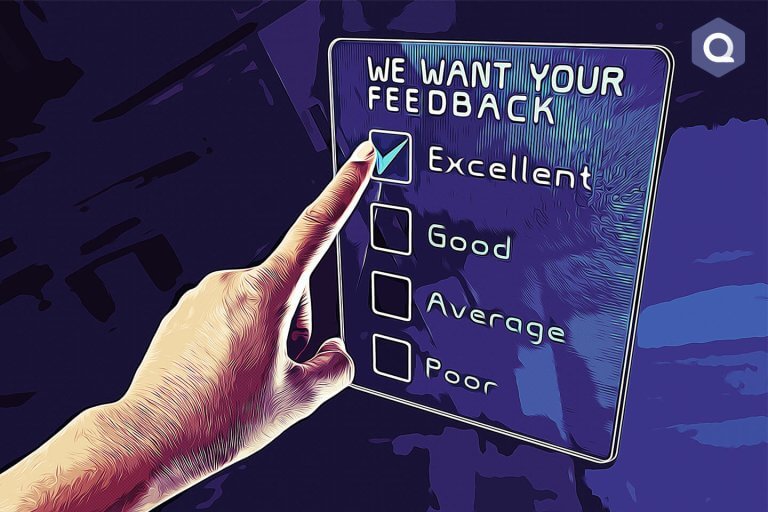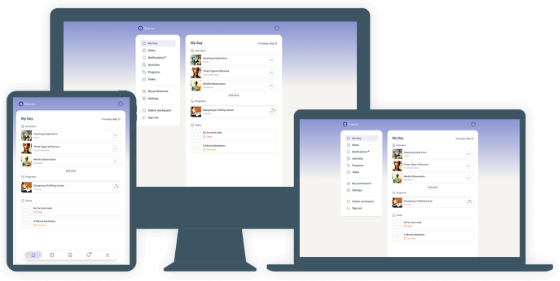In the ever-evolving field of mental health, the importance of evaluating therapy effectiveness cannot be overstated. Therapy evaluation questionnaires have emerged as powerful tools for professionals to assess and improve their practice [1]. These instruments provide valuable insights into client progress, satisfaction, and overall treatment outcomes, allowing therapists to make data-driven decisions and tailor their approaches to individual needs.
As the demand for evidence-based practices in mental health continues to grow, therapy evaluation questionnaires have become indispensable for professionals seeking to demonstrate the efficacy of their interventions [2]. By systematically collecting and analyzing feedback from clients, therapists can not only improve their practice but also contribute to the broader field of psychotherapy research.
This blog post will explore the power of therapy evaluation questionnaires, their benefits, and best practices for implementation in professional settings. Whether you’re a seasoned practitioner or just starting your career in mental health, understanding the value of these tools can significantly enhance your ability to provide effective, client-centered care.
Understanding Therapy Evaluation Questionnaires
Therapy evaluation questionnaires are structured assessment tools designed to gather feedback from clients about their therapy experience and outcomes. These instruments typically consist of a series of questions that cover various aspects of the therapeutic process, including symptom reduction, goal attainment, therapeutic alliance, and overall satisfaction [3].
Key components of effective therapy evaluation questionnaires include:
- Demographic information: Basic data about the client to contextualize responses.
- Therapy progress: Questions assessing perceived changes in symptoms and functioning.
- Therapeutic relationship: Evaluation of the client-therapist rapport and trust.
- Treatment satisfaction: Overall contentment with the therapy process and outcomes.
- Goal attainment: Assessment of progress towards specific therapy objectives.
- Feedback and suggestions: Open-ended questions for additional client input.
These components work together to provide a comprehensive picture of the therapy experience from the client’s perspective. By incorporating both quantitative and qualitative elements, questionnaires can capture nuanced feedback that might otherwise be missed in routine clinical interactions [4].
| Component | Description | Importance |
|---|---|---|
| Symptom Assessment | Measures changes in specific symptoms | Tracks direct treatment effects |
| Therapeutic Alliance | Evaluates client-therapist relationship | Predicts treatment outcomes |
| Goal Progress | Assesses advancement towards therapy goals | Ensures treatment alignment |
| Client Satisfaction | Measures overall contentment with therapy | Indicates perceived value of treatment |
Benefits of Using Therapy Evaluation Questionnaires
Implementing therapy evaluation questionnaires in clinical practice offers numerous advantages for both therapists and clients:
- Improving treatment effectiveness: Regular feedback allows therapists to identify areas where interventions may not be working as intended, enabling timely adjustments to treatment plans. This iterative process can lead to more effective and personalized care [5].
- Enhancing client satisfaction: By actively seeking client feedback, therapists demonstrate their commitment to providing high-quality care. This can increase client engagement and satisfaction with the therapeutic process.
- Facilitating evidence-based decision-making: Questionnaires provide therapists with concrete data to inform their clinical decisions. This evidence-based approach can lead to more accurate diagnoses, more effective treatment planning, and better overall outcomes [6].
- Identifying at-risk clients: Regular evaluations can help therapists identify clients who may not be responding well to treatment or who are at risk of dropping out. This early detection allows for timely intervention and course correction.
- Promoting professional development: By analyzing patterns in client feedback over time, therapists can identify areas for personal growth and skill development, leading to continuous improvement in their practice.
- Supporting research and quality improvement: Aggregated data from evaluation questionnaires can contribute to broader research initiatives and help identify best practices in psychotherapy.
When to Administer Therapy Evaluation Questionnaires
The timing and frequency of administering therapy evaluation questionnaires can significantly impact their effectiveness. Here are some key considerations:
- Initial assessment: Administering a questionnaire at the beginning of therapy establishes a baseline for future comparisons and helps set treatment goals [7].
- Regular intervals: Depending on the therapy’s duration and intensity, questionnaires can be administered at set intervals (e.g., every 4-6 sessions) to track progress consistently.
- Milestone-based administration: Questionnaires can be given at significant points in therapy, such as after completing a specific treatment module or reaching a predetermined goal.
- Pre- and post-session: Brief questionnaires administered before and after each session can provide immediate feedback on the session’s effectiveness.
- End of treatment: A final evaluation at the conclusion of therapy helps assess overall outcomes and client satisfaction.
- Follow-up: Administering questionnaires after therapy has ended (e.g., 3 or 6 months post-treatment) can provide valuable information on the long-term impact of therapy.
The optimal timing and frequency may vary depending on the specific therapeutic approach, client needs, and practice setting. It’s essential to strike a balance between gathering sufficient data and avoiding questionnaire fatigue, which could lead to less thoughtful or accurate responses from clients.
By carefully considering when to administer therapy evaluation questionnaires, therapists can maximize the benefits of these tools while ensuring a smooth and non-disruptive integration into the therapeutic process.
Best Practices for Administering Questionnaires
To maximize the effectiveness of therapy evaluation questionnaires, it’s crucial to follow best practices in their administration:
- Ensure client confidentiality: Clearly communicate to clients that their responses will be kept confidential and used solely for improving their treatment. This assurance can lead to more honest and accurate feedback [8].
- Choose appropriate formats: Offer questionnaires in multiple formats (e.g., paper-based, online, or through therapy software) to accommodate different client preferences and enhance accessibility.
- Provide clear instructions: Ensure that clients understand how to complete the questionnaire, including any rating scales or response options. Clear instructions can improve the quality and consistency of responses.
- Consider cultural and linguistic factors: Be mindful of cultural differences and language barriers when administering questionnaires. Offer translated versions when necessary and ensure that questions are culturally sensitive and relevant.
- Time administration appropriately: Choose a time to administer the questionnaire when clients are likely to be focused and have sufficient time to provide thoughtful responses.
- Integrate into the therapeutic process: Discuss the purpose and importance of the questionnaire with clients, framing it as an integral part of their therapy journey rather than an administrative task.
- Follow up on responses: Review questionnaire results with clients, using their feedback as a springboard for discussion and collaborative treatment planning [9].
| Practice | Description | Benefit |
|---|---|---|
| Regular Administration | Administer questionnaires at consistent intervals | Enables tracking of progress over time |
| Digital Integration | Use electronic platforms for questionnaire delivery | Increases efficiency and data accuracy |
| Feedback Discussion | Review questionnaire results with clients | Enhances therapeutic alliance and engagement |
| Customization | Tailor questionnaires to specific therapy modalities | Improves relevance and specificity of feedback |
Analyzing Questionnaire Responses
Effective analysis of questionnaire responses is crucial for deriving meaningful insights:
- Identifying patterns and trends: Look for consistent themes or changes in responses over time. This can reveal areas of progress or concern that may not be immediately apparent in therapy sessions.
- Using therapy evaluation metrics: Employ standardized measures such as the Outcome Questionnaire-45 (OQ-45) or the Session Rating Scale (SRS) to quantify client progress and compare results against established benchmarks [10].
- Interpreting qualitative feedback: Pay close attention to open-ended responses, which can provide nuanced insights into client experiences and suggestions for improvement.
- Comparing individual and aggregate data: Analyze individual client responses in the context of broader trends across your practice to identify both personal and systemic areas for improvement.
- Utilizing statistical analysis: For larger practices or research purposes, consider using statistical methods to analyze questionnaire data, identifying significant trends and correlations.
- Incorporating technology: Use therapy management software or specialized analytics tools to streamline data collection and analysis, making it easier to track progress over time [11].
Utilizing Questionnaire Results to Improve Practice
The insights gained from therapy evaluation questionnaires can be leveraged to enhance professional practice:
- Adjusting treatment plans: Use client feedback to make data-driven adjustments to treatment strategies, ensuring interventions remain aligned with client needs and goals.
- Enhancing therapeutic approaches: Identify areas where clients consistently report dissatisfaction or slow progress, and explore alternative techniques or interventions to address these challenges.
- Tracking client progress over time: Utilize longitudinal data to monitor client progress, celebrate milestones, and identify potential setbacks or plateaus in treatment.
- Improving therapeutic alliance: Pay attention to feedback regarding the client-therapist relationship, using this information to strengthen rapport and trust.
- Tailoring interventions: Customize therapeutic techniques based on individual client preferences and responses, as indicated by questionnaire results.
- Facilitating collaborative care: Share questionnaire results with clients to promote transparency and engage them more actively in the treatment process [12].
Overcoming Challenges in Implementing Evaluation Questionnaires
While therapy evaluation questionnaires offer numerous benefits, their implementation can face challenges:
- Time constraints: Address concerns about time management by integrating questionnaires seamlessly into session workflows and using efficient data collection methods.
- Resistance to change: Educate colleagues about the benefits of questionnaires and provide training to facilitate smooth adoption.
- Client reluctance: Explain the purpose and benefits of questionnaires to clients, emphasizing how their feedback contributes to better treatment outcomes.
- Data overwhelm: Develop clear protocols for analyzing and acting on questionnaire data to prevent information overload.
- Technological barriers: Invest in user-friendly software solutions and provide technical support to overcome any technology-related obstacles.
- Maintaining consistency: Establish clear guidelines and reminders for regular questionnaire administration to ensure consistent use across your practice [2].
The Future of Therapy Evaluation Questionnaires
As technology continues to advance and our understanding of mental health deepens, the landscape of therapy evaluation questionnaires is evolving rapidly. This evolution promises to bring exciting developments that could revolutionize how we assess and improve therapeutic outcomes.
One of the most promising trends is the integration of artificial intelligence (AI) and machine learning algorithms into questionnaire analysis. These technologies have the potential to identify subtle patterns and trends in client responses that might be missed by human analysis alone. By processing vast amounts of data from multiple sources, AI could provide therapists with more nuanced and personalized insights into their clients’ progress [13].
Another emerging trend is the use of ecological momentary assessment (EMA) in conjunction with traditional questionnaires. EMA involves collecting data in real-time through smartphone apps or wearable devices, allowing for a more comprehensive and dynamic understanding of clients’ experiences between therapy sessions. This approach could provide a more accurate picture of how clients are functioning in their daily lives, rather than relying solely on retrospective reports during therapy sessions [14].
The future may also see a shift towards more collaborative and client-driven evaluation processes. As the importance of client engagement in therapy becomes increasingly recognized, we may see the development of questionnaires that allow clients to set their own goals and track progress in areas that are most meaningful to them. This approach could enhance client motivation and provide therapists with insights that are more aligned with their clients’ personal objectives.
Finally, as our understanding of cultural factors in mental health continues to grow, we can expect to see the development of more culturally sensitive and adaptable questionnaires. These tools will be designed to capture the nuances of diverse cultural experiences and expressions of mental health, ensuring that therapy evaluation is relevant and meaningful across different populations [15].
As these developments unfold, it will be crucial for mental health professionals to stay informed and adapt their practices accordingly. By embracing these innovations, therapists can ensure they are providing the most effective, personalized, and culturally sensitive care possible to their clients.
Conclusion
Therapy evaluation questionnaires are powerful tools that can significantly enhance professional practice in mental health settings. By providing valuable insights into client experiences and treatment outcomes, these instruments enable therapists to deliver more effective, client-centered care.
The benefits of implementing therapy evaluation questionnaires are clear: improved treatment effectiveness, enhanced client satisfaction, and data-driven decision-making. However, successful implementation requires careful consideration of timing, administration methods, and analysis techniques.
As the field of mental health continues to evolve, the use of evaluation questionnaires will likely become increasingly important. By embracing these tools and overcoming potential challenges in their implementation, therapists can stay at the forefront of evidence-based practice, continually improving their skills and the quality of care they provide [16].
By incorporating therapy evaluation questionnaires into your practice, you demonstrate a commitment to excellence and continuous improvement. This not only benefits your clients but also contributes to the advancement of the mental health profession as a whole.
Frequently Asked Questions
Selecting the appropriate questionnaire depends on several factors, including your therapeutic approach, client population, and specific goals. Consider standardized measures like the OQ-45 for general symptom tracking, or more specialized tools for specific disorders. It’s also important to balance comprehensiveness with practicality – choose questionnaires that provide valuable insights without overwhelming clients or disrupting your session flow.
To address client resistance, emphasize the benefits of questionnaires in improving their treatment. Explain how their feedback directly influences therapy decisions and helps tailor the approach to their needs. Consider involving clients in selecting relevant questions or measures. Additionally, keep questionnaires concise and integrate them smoothly into sessions to minimize perceived burden.
The ideal frequency depends on the therapy duration and intensity. For short-term therapies, consider administering questionnaires every 2-3 sessions. For longer-term treatments, every 4-6 sessions may be sufficient. Some practices use brief measures at the beginning and end of each session. The key is to find a balance that provides meaningful data without causing questionnaire fatigue.
Start by establishing baseline scores for each client. Look for trends over time, paying attention to significant changes in scores. Use both quantitative data (e.g., symptom severity scores) and qualitative feedback to get a comprehensive picture. Consider using statistical methods like reliable change indices to determine if changes are clinically significant. Always interpret results in the context of the individual client’s circumstances and treatment goals.
Aggregate data from questionnaires can provide valuable insights into your practice’s overall effectiveness. Look for patterns across clients to identify areas where your therapeutic approach is particularly strong or could be improved. Use this information to guide professional development activities or to refine your treatment protocols. Additionally, questionnaire data can be valuable for demonstrating the effectiveness of your practice to referral sources or insurance providers.
References
- ^ Lambert, M. J., & Ogles, B. M. (2004). The efficacy and effectiveness of psychotherapy. In M. J. Lambert (Ed.), Bergin and Garfield's handbook of psychotherapy and behavior change (5th ed., pp. 139-193). Wiley.
- ^ Boswell, J. F., Kraus, D. R., Miller, S. D., & Lambert, M. J. (2015). Implementing routine outcome monitoring in clinical practice: Benefits, challenges, and solutions. Psychotherapy Research, 25(1), 6-19. https://doi.org/10.1080/10503307.2013.817696
- ^ Seligman, M. E. P. (1995). The effectiveness of psychotherapy: The Consumer Reports study. American Psychologist, 50(12), 965-974. https://doi.org/10.1037/0003-066X.50.12.965
- ^ Hannan, C., Lambert, M. J., Harmon, C., Nielsen, S. L., Smart, D. W., Shimokawa, K., & Sutton, S. W. (2005). A lab test and algorithms for identifying clients at risk for treatment failure. Journal of Clinical Psychology, 61(2), 155-163. https://doi.org/10.1002/jclp.20108
- ^ Lambert, M. J., Whipple, J. L., & Kleinstäuber, M. (2018). Collecting and delivering progress feedback: A meta-analysis of routine outcome monitoring. Psychotherapy, 55(4), 520-537. https://doi.org/10.1037/pst0000167
- ^ Shimokawa, K., Lambert, M. J., & Smart, D. W. (2010). Enhancing treatment outcome of patients at risk of treatment failure: Meta-analytic and mega-analytic review of a psychotherapy quality assurance system. Journal of Consulting and Clinical Psychology, 78(3), 298-311. https://doi.org/10.1037/a0019247
- ^ Kraus, D. R., Castonguay, L. G., Boswell, J. F., Nordberg, S. S., & Hayes, J. A. (2011). Therapist effectiveness: Implications for accountability and patient care. Psychotherapy Research, 21(3), 267-276. https://doi.org/10.1080/10503307.2011.563249
- ^ Bickman, L., Kelley, S. D., Breda, C., de Andrade, A. R., & Riemer, M. (2011). Effects of routine feedback to clinicians on mental health outcomes of youths: Results of a randomized trial. Psychiatric Services, 62(12), 1423-1429. https://doi.org/10.1176/appi.ps.002052011
- ^ Jensen-Doss, A., Haimes, E. M. B., Smith, A. M., Lyon, A. R., Lewis, C. C., Stanick, C. F., & Hawley, K. M. (2018). Monitoring treatment progress and providing feedback is viewed favorably but rarely used in practice. Administration and Policy in Mental Health and Mental Health Services Research, 45(1), 48-61. https://doi.org/10.1007/s10488-016-0763-0
- ^ Lambert, M. J., Whipple, J. L., Hawkins, E. J., Vermeersch, D. A., Nielsen, S. L., & Smart, D. W. (2003). Is it time for clinicians to routinely track patient outcome? A meta-analysis. Clinical Psychology: Science and Practice, 10(3), 288-301. https://doi.org/10.1093/clipsy.bpg025
- ^ Bauer, S., Lambert, M. J., & Nielsen, S. L. (2004). Clinical significance methods: A comparison of statistical techniques. Journal of Personality Assessment, 82(1), 60-70. https://doi.org/10.1207/s15327752jpa8201_11
- ^ Norcross, J. C., & Lambert, M. J. (2018). Psychotherapy relationships that work III. Psychotherapy, 55(4), 303-315. https://doi.org/10.1037/pst0000193
- ^ Lutz, W., Rubel, J. A., Schwartz, B., Schilling, V., & Deisenhofer, A. K. (2019). Towards integrating personalized feedback research into clinical practice: Development of the Trier Treatment Navigator (TTN). Behaviour Research and Therapy, 120, 103438. https://doi.org/10.1016/j.brat.2019.103438
- ^ Myin-Germeys, I., Kasanova, Z., Vaessen, T., Vachon, H., Kirtley, O., Viechtbauer, W., & Reininghaus, U. (2018). Experience sampling methodology in mental health research: new insights and technical developments. World Psychiatry, 17(2), 123-132. https://doi.org/10.1002/wps.20513
- ^ Ryder, A. G., & Chentsova-Dutton, Y. E. (2015). Cultural-clinical psychology: From cultural scripts to contextualized treatments. In L. J. Kirmayer, R. Lemelson, & C. A. Cummings (Eds.), Re-visioning psychiatry: Cultural phenomenology, critical neuroscience, and global mental health (pp. 400-433). Cambridge University Press.
- ^ Ionita, G., & Fitzpatrick, M. (2014). Bringing science to clinical practice: A Canadian survey of psychological practice and usage of progress monitoring measures. Canadian Psychology/Psychologie Canadienne, 55(3), 187-196. https://doi.org/10.1037/a0037355



